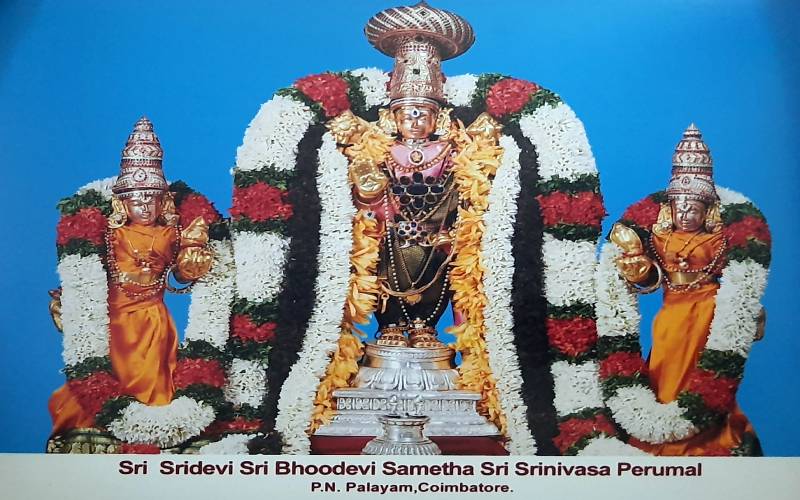
The vaishnavite tradition is well-ingrained in Coimbatore. This was due to the efforts of the large number of black soil farmers who cultivated cotton. They were bowled over by the concept of equality, which was propounded by Saint Ramanujaacharya. These farmers have been adding to the wealth of the Kongu region for more than 500 years. Some of them lived near the low-lying areas connected with the Sanganur canal and repeated flooding forced them to migrate to Pappanaickenpalayam and Peelamedu during the November of 1711.
The cotton farmers continue to live peacefully ever after at the newly founded Pappanaickenpalayam. The social-minded Periya Govindaswamy Naidu was well-placed economically and he was an ardent vaishnavite. He was deeply attached to the Mondipalayam Venkatesaperumal Temple and had worked hard for its development. Periya Govindaswamy was a practitioner of natural medicine. He was known to move about on his horse to provide medical relief for the socially depressed.
Pappanaickenpalayam consisted of Pudur and Pazhaiyur. There existed an old Mariamman Temple at Pazhaiyur. The Telugu-speaking farmers of Pudur and the people of Pazhaiyur used to carry Theechatti-s (Firepots) during the annual festival. One day Periya Govindaswamy and his relatives became quite upset. They felt they had not been treated well and therefore they decided to build a Mariamman Temple at Pudur.
Periya Govindaswamy and his brothers Bodi Naidu, Krishnamma Naidu lived as a joint-family, and they gave away a part of their family lands for facilitating the construction of a Mariamman Temple and the temple came up thereafter. The ardent vaishnavite, Periya Govindaswamy Naidu, wanted to build a Perumal (Lord Vishnu) temple near the Mariamman Temple and the required granite stones were procured and brought over to the spot.
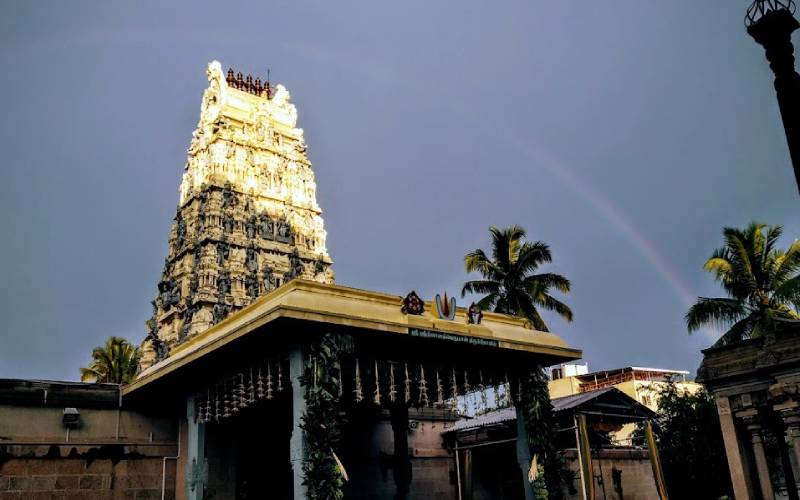
Meanwhile, Periya Govindaswamy Naidu’s cousin’s wife, Pappammal Chinnagovindaswamy Naidu, objected to the placement of a vaishnavite deity right behind the Shaivite Mariamman Temple. Educated Pappammal was an ardent devotee of Lord Vishnu and she had been to several vaishnavite temples in the south. This experience had enriched her and made her well-versed in all the vaishnavite temple traditions.
Pappammal was a devotee of Lord Upiliappan near Kumbakonam and was known to make contributions over there. This ardent vaishnavite had established an ashram at Upiliappan Kovil. Pappammal was known to cook her own food and would never consume food made by anyone else. She was known for maintaining a social distance from everyone and this argumentative vaishnavite would only regard the followers of Vishnu. The devout Pappammal would eat just once a day and was known to recite numerous verses from the ‘Divya Prabandham’ while attending to her household work. Therefore, the family decided to adhere to her suggestions and began looking for a different place.
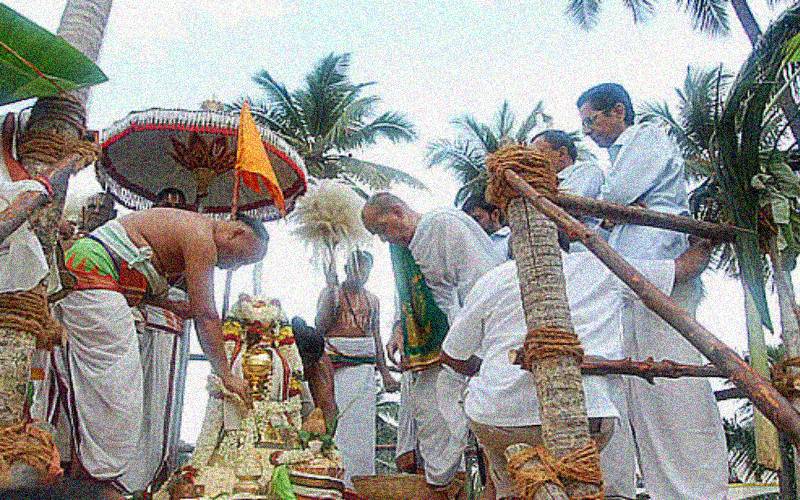
Vaishnavite Pallikondaiah had been the religious-cum-spiritual advisor for the family of Periya Govindaswamy Naidu. He had some land near the outskirts of the Pudur part of the Pappanaickenpalayam. Pallikondaiah came forward to let Periya Govindaswamy Naidu and his brothers to construct the temple on his land. Thereafter, the land was purchased in the names of G. Kuppuswamy Naidu and G. Venkataswamy Naidu (The two sons of Periya Govindaswamy Naidu).
The materials that had been acquired for the construction of the temple were transferred to the new site and the Venkatesaperumal Temple was constructed as per the original plan. Shrines for Lord Vishwaksena and the aazhwaar-s were constructed alongside and a Mahasamprokshanam (Consecration) was performed on 16 May 1910. The noble-minded Periya Govindaswamy passed away in 1916 and his nephew Auditor B. Venkataswamy Naidu (Son of Bodi Naidu) sought to become a trustee of the temple. He sued the family of G. Kuppuswamy Naidu, and Sri Pallikondaiah was made a joint trustee during those times.
The temple was thereafter known as the Sri Srinivasa Perumal Temple and Pallikondaiah looked after the temple for some time, and this took place under the guidance of G. Kuppuswamy Naidu (Founder, The Lakshmi Mills Company Limited). Finally, the honorable court declared that G. Kuppuswamy Naidu will manage the temple as its trustee. The temple was funded with the mahimai income from Lakshmi Mills. A part of income from businesses was used for charity those day and this was known as mahimai. It was a voluntary CSR (Corporate Social Responsibility) of the olden times.
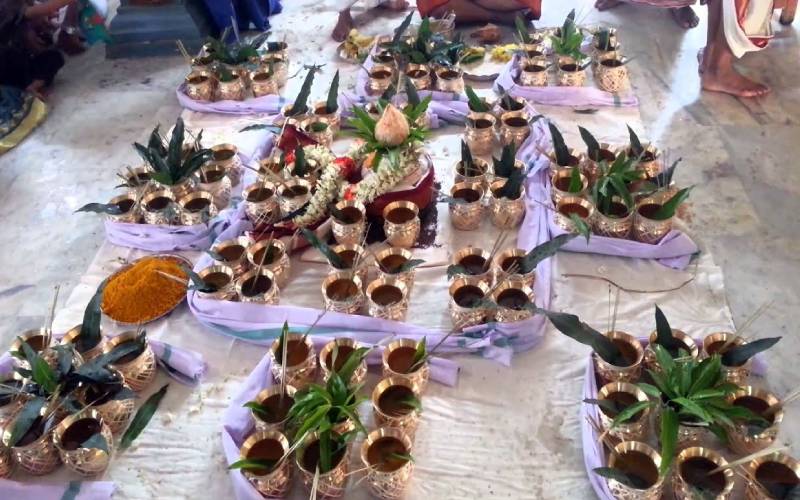
Pallikondaiah’s brother, Venkatachalam Iyer used to take care of the work and rituals connected with the temple. Proper management and regular prayers ensured that more and more people came to offer their worship to Srinivasa Perumal. Therefore, the management constructed a tile-roof mandapam in the place of the one which was covered with palm leaves. This happened on 23 May 1923 and the second kumbhaabishekam took place at that time. Nagai Pillar Sri Gangadhara Naidu had offered a garuda vahana to the temple.
Quarters for the temple priests were constructed under the supervision of Pallikondaiah (Close friend of G. Kuppuswamy Naidu). The tile-roof mandapam was replaced by a granite one on 8 June 1935 and this took place at the time of the third mahasamprokhanam. G. Kuppuswamy Naidu and his beloved brother, G. Venkataswamy Naidu played an important role in the same.
The fourth mahasamprokshanam took place as per the vaishnavite norms and the swarga vaasal gopuram, the rajagopuram were dedicated on 2 June 1960 due to the efforts of G. Venkataswamy Naidu. The fifth mahasamprokshanam took place at the same time. Twelve years later, a huge garbha mahamandapam began to come up due to the efforts of G. Venkataswamy Naidu and this came to be known as the Venkatesa Mandapam (1972). The sixth mahasamprokshanam was conducted by the noble-minded gentleman entrepreneur, Cavaliere Dr. G. K. Devarajulu (Chairman, The Lakshmi group of companies, Founder, The Lakshmi Machine Works Limited, and Co-founder, South India Viscose).
The founders had envisaged a grand plan and therefore left a lot of place for executing the same. They had kept a large icon of Lord Srinivasa, and this was a precursor for their big dreams. They had also wanted to construct a shrine for Alarmel Mangai Thaayaar (Consort of Lord Srinivasa) and this was thought about on several occasions, but it did not take place.
In the year 1960, the proposal was considered deeply but a rajagopuram and swarga vaasal only was erected at that time. Somehow, the shrine of Alarmel Mangai Thaayaar did not happen. More recently, a shrine for Chakrathaazhwaar (Lord Sudharshana) was constructed at this wonderful temple and the eight grandsons of G. Venkataswamy Naidu had contributed towards the same. A vasantha mandapa and a temple garden at the rear have been adding grace to the premises. The hanuman shrine, the temple well, the yaagashaala and the Thirumadapalli (Temple kitchen) are located near the rajagopuram. The Kalkodimaram (Flag post made of stone) is etched with an image of Lord Hanuman and its beauty is further enhanced by the lovely Lakshmiammal Mandapam. It is marvelously sculpted out of stone.

The temple uses well water for cooking and ablutions. The stove is fired with wood and a dedicated team of vaishnavite cooks take care of the place. The temple staff and the vadakilai priests follow all the rules as propounded by Saint Ramanujaacharya. The Aazhwaar Shrine consists of the lovely icons of Nammaazhwaar, Ramanuja and Vedanta Desika. An icon of the first jeeyar of Ahobilam Mutt, Adhivan Satakopa Yatindra Mahadesikan is present along with the icons of the aachaarya-s and Nammaazhwaar. The Senai mudaliar or Vishwaksena faces the aazhwaar-s and the aarshamandapam is endowed with the well-sculpted granite icons of Jaya and Vijaya (Gatekeepers of heaven who are known as dwaarapaalakaa-s).
The shrine of garuda faces Lord Srinivasa and one can savor the reflection of the lord in the huge mirror which is placed above the same. The gopuram-s are finished with the colors, ivory and grey. The Sudhai (Stuccowork) on the gopuram-s is fabulous. It has been a custom to be blessed with the sattari from an ancient temple that has been the itinerary of the aazhwaar-s. The sattari of the Srinivasa Perumal Temple is from the divya desam, Therazhundhur. Therefore, the song rendered by Thirumangai Aazhwaar in front of Aamaruviappan (Devaadhiraajan at Therazhundhur) is being recited in front of Lord Srinivasa after supper.
The renowned seer, Sri Thirukudandhai Aandavan Srivedanta Ramanuja Mahadesikan, visited the shrine on 14 January 1967. He had experienced a horripilation while offering his prayers to Srinivasa and this joy and peace was said to be unparalleled. The seer expressed his desire to meet the dharmakartha of the temple. Immediately, the dharmakartha, G. Venkataswamy Naidu, gathered himself to the temple and offered his respects to the holy seer. He stated that G. Venkataswamy Naidu and his elders were truly blessed. They were lucky to serve Lord Srinivasa and that the temple environs gave the same feeling which was equivalent to the one while praying in front of Lord Venkataramana at Thirumala Tirupathi.
He advised Venkataswamy Naidu to continuously offer the services of Lakshmi family to Lord Srinivasa and added that this would usher in all round prosperity. It was only after this incident that the vasantha mandapam known as Venkatesa Madapam under the stewardship of G. Venkataswamy Naidu. Seth Bangur had visited this temple at around the same time, and he had contributed Rs. 15,000 towards the temple development plan.
G. Venkataswamy Naidu was the dharmakartha until 1972 and he was succeeded by his nephews, G. K. Devarajulu, G. K. Sundaram, and G. K. Rajagopal. D. Jayawardhanavelu, Son of G. K. Devarajulu, was deeply devoted to Lord Srinivasa. His mother, Thaayaarammal Devarajulu, was ever keen to offer her devotion to Lord Srinivasa. She used to visit the temple regularly and was conversant with all the aspects connected with the prayers and the management of the temple.
Thaayaarammal Devarajulu would interact with all the devotees of the temple regularly. She used to be known as Peddha Thaayaarammal (Big Thaayaarammal). The temple follows the desika sampradhayam and does not swerve from the well-established prudent norms. The visit of the seer of Ahobilam Sri Narayana Yatindra Mahadesikan and his entourage was celebrated in a devout manner. His successor, His Holiness Sri Ranganatha Yatindra Mahadesikan, has also offered his prayers to Lord Srinivasa. Several saints and the common man alike have been benefitted with the grace of Lord Srinivasa Perumal. The naivedyam in the temple is made with utmost care and is distributed to all the devotees regularly. The annadhaanam at this temple is a dedicated affair every day.
It would be a pleasure for the devoted to witness the 108 Kalasa Thirumanjanam and Annakoota Utsavam at this holy place. The gleaming and glistening silver kalasam-s that are being used at the time of worship are an indication of the good management system prevalent in the temple. G. Venkataswamy Naidu had been particular to keep the temple clean and neat. This is being followed by the current management headed by G. Kuppuswamy Naidu’s great grandson, Sanjay Jayawardhanavelu.
The members of the Lakshmi family are ever keen to serve Lord Srinivasa at Pappanaickenpalayam in Coimbatore. A number of priests and employees of temple have served the lord with utmost devotion. Several volunteers, devotees, and families connected with the temple for decades together continue to engage themselves with Lord Srinivasa Perumal.
The Vaikunta Ekadashi celebration at this temple is legendary. Annual Brahmaotsavam-s and Thirukalyana Utsavam of the lovely and handsome Srinivasa is a sight to behold. The beautiful utsava vigrahaa-s seem to communicate with the faithful. The temple has acquired the status of a divya desam and it continues to bless the Kongu region and Coimbatore with the sixteen forms of wealth.
Information connected with the microdetails of this temple had been remembered and shared by R. Chinnaswamy Naidu (Headmaster, Mani Hr. Sec. School), Pappanaickenpalayam.
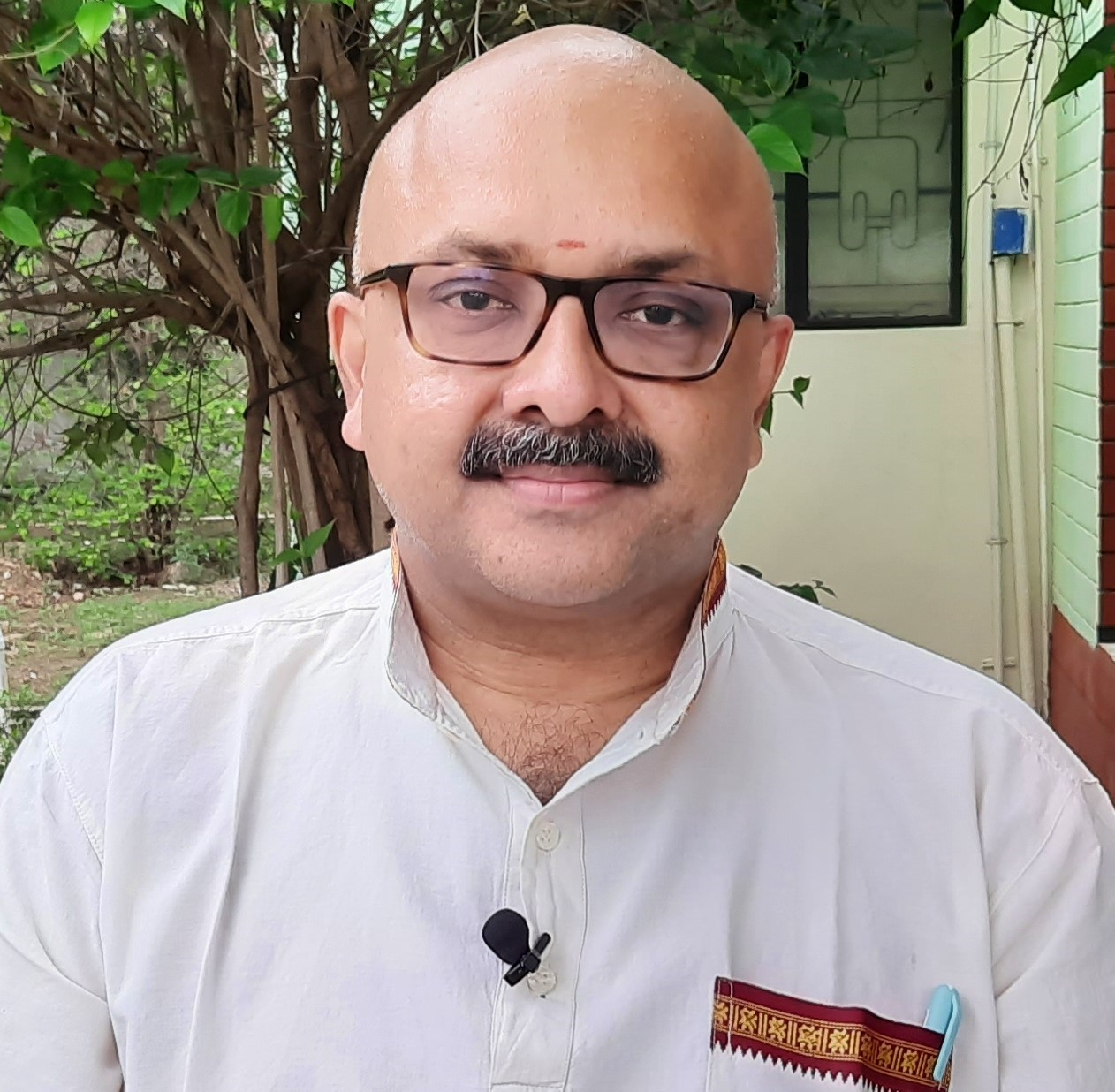
Mr. Rajesh Govindarajulu is one of the founding members of the Verandah Club Pvt. Ltd. He is a leading columnist, historian, jeweler, entrepreneur, and a heritage enthusiast who is earnestly working to revive the past in the light of the present. Experiential learning about the history of Coimbatore is his main course of interest and he is also a panel member of many colleges in the city.
NEXT ARTICLE
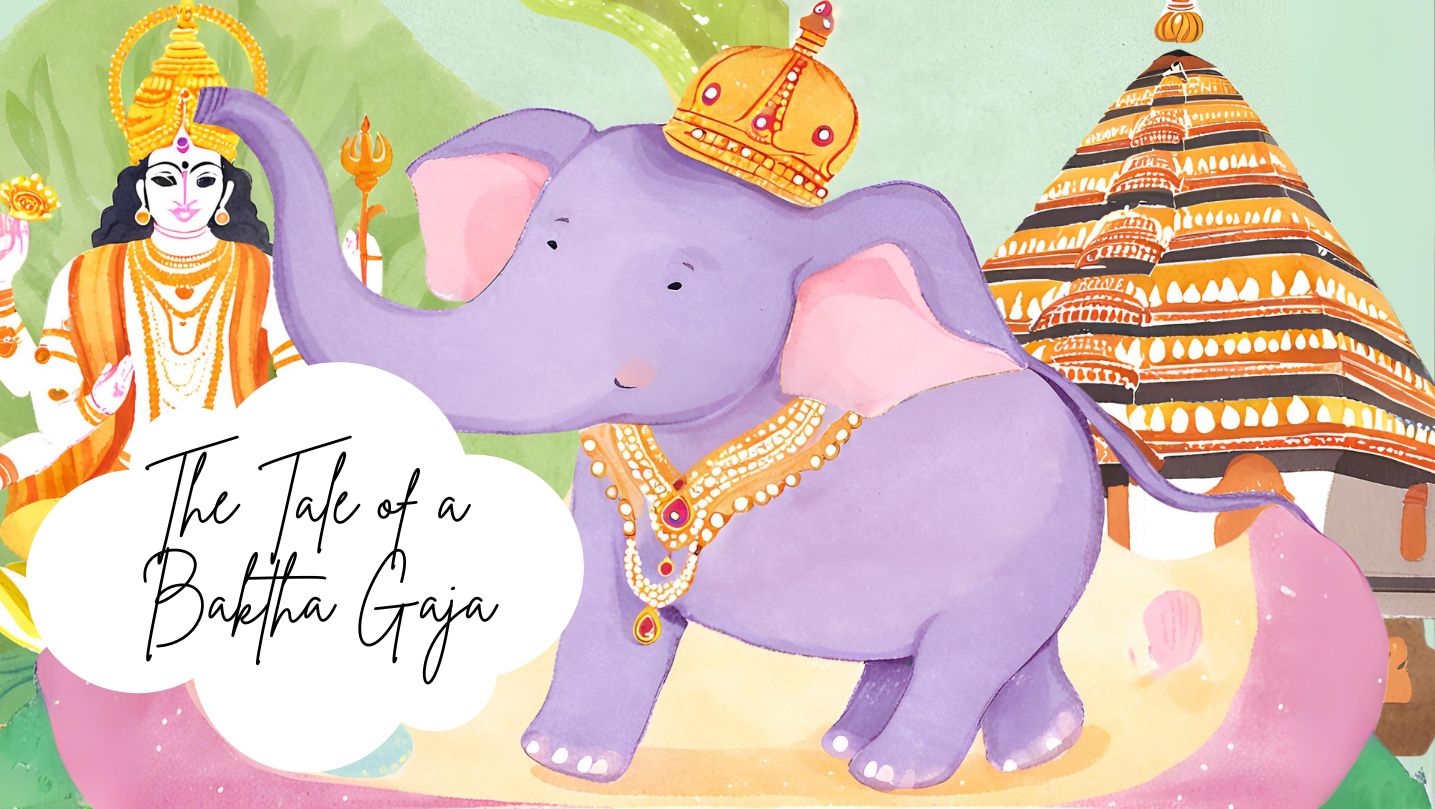
In the lush, green heart of Kerala lived an elephant who became a living legend - a tale of an elephant turned into a bakth. His name was Keshavan, bu...
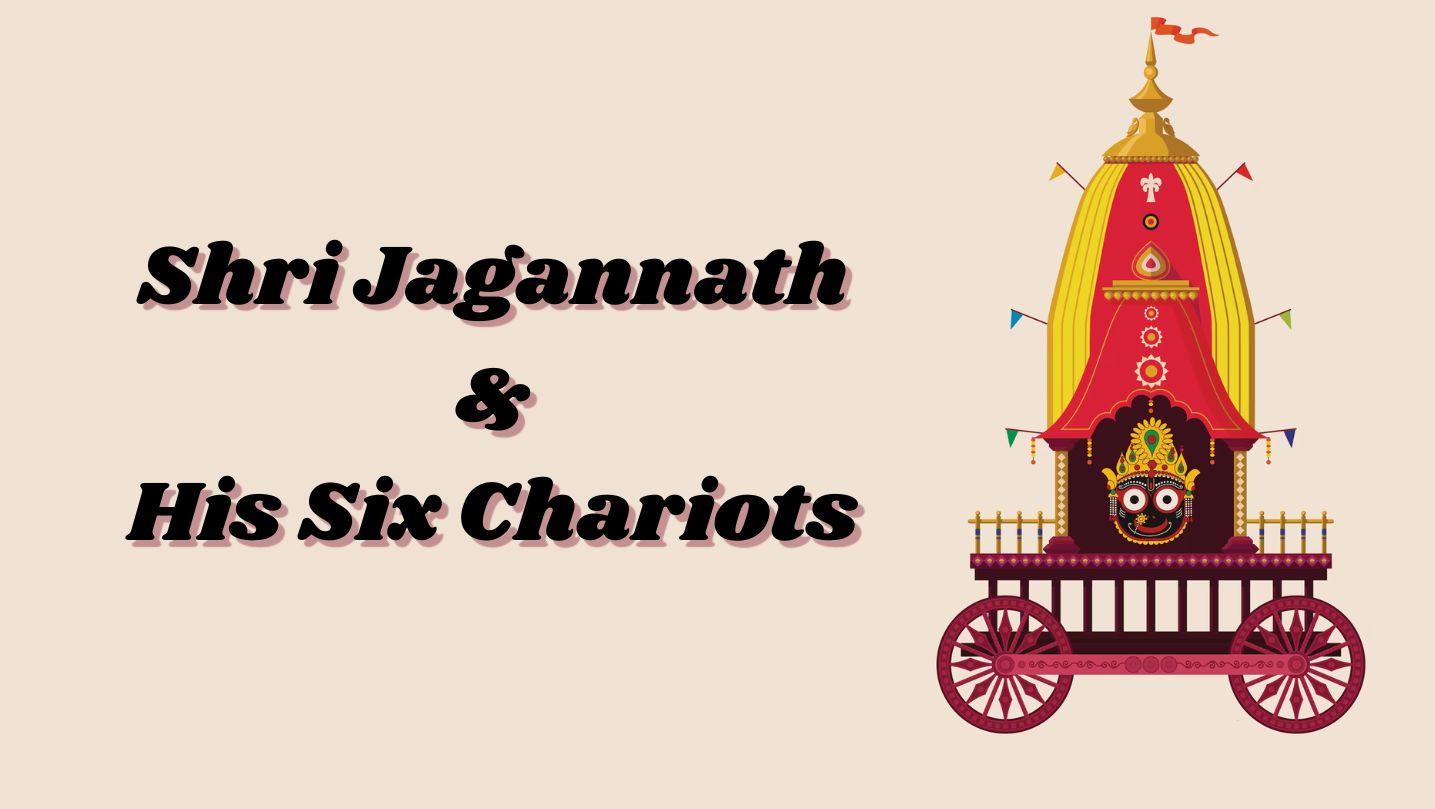
The Chaitanya Charitamrita by Shri Krishna Das Kaviraj provides a vivid description of the operations management of Shri Gundicha Yatra during the tim...
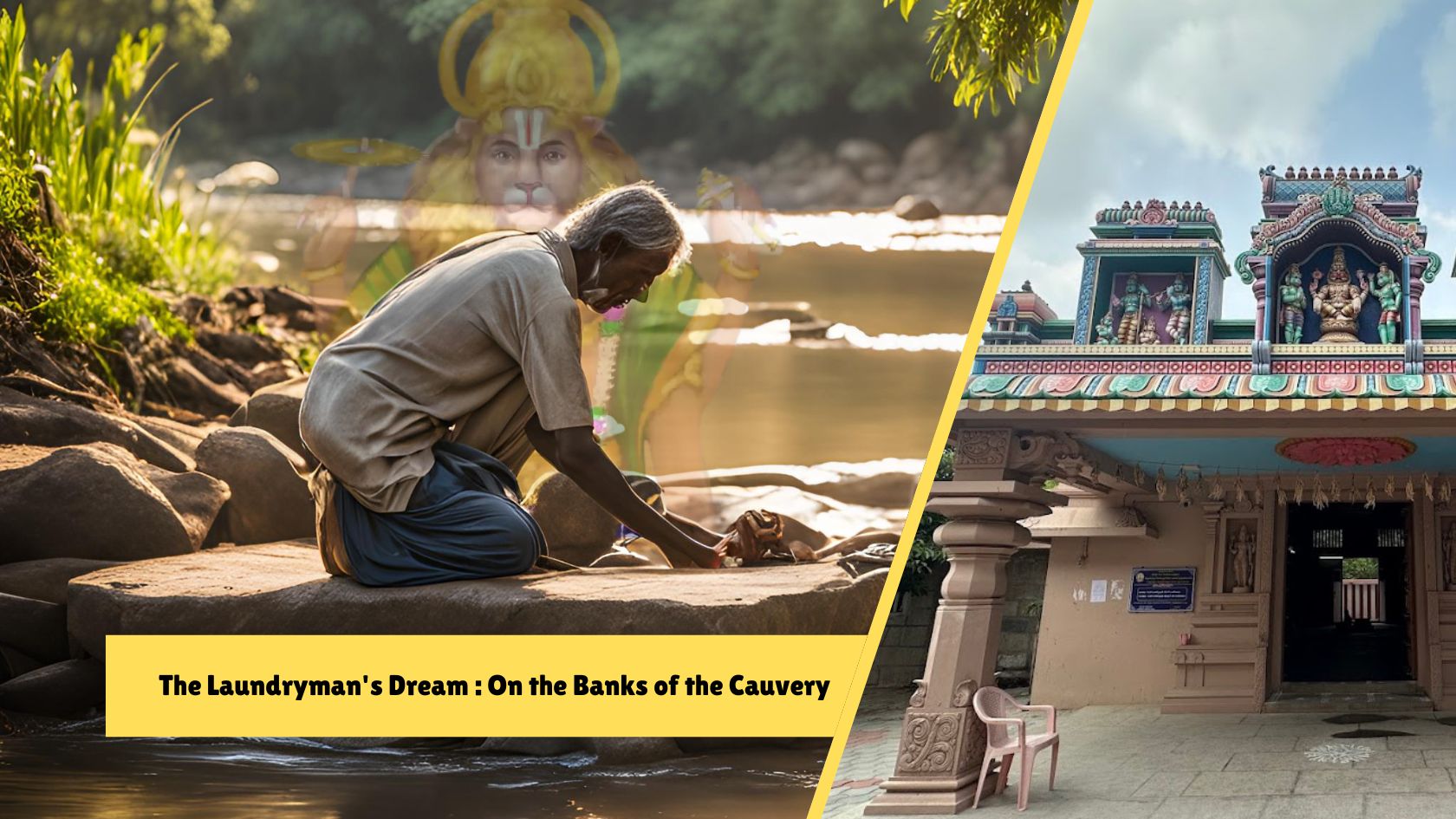
The sun beat down on my back as we stepped out of the car, the air thick with the humidity of rural Tamil Nadu. Chinthalavadi, a small village nestled...